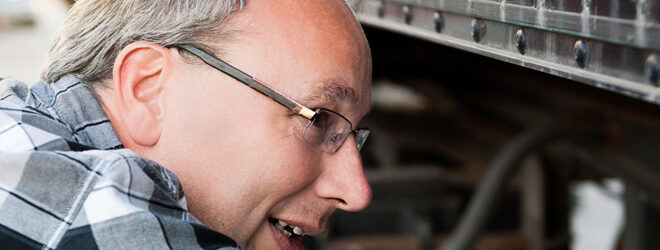A building site without construction surveillance is like a house without locks on the doors: not everyone will test the doorknob, but those looking to swipe some valuables will welcome the lack of resistance.
Sophisticated risk mitigation tools aren’t just nice to have, they’re crucial for construction and contracting companies. Significant assets, complex projects, and vulnerable work sites make construction surveillance particularly important — and given how equipment theft is a growing problem, it might be time to upgrade your system.
The value in construction sites
According to BuildForce Canada, the construction industry accounts for 7 per cent of gross domestic product. One out of 13 workers employed in Canada earns a living in the construction industry, and the construction sector’s total employment has increased by approximately 673,000 workers since 1996. As the construction industry grows, so do construction sites, and that means there’s more valuable raw material and expensive machinery to be coveted (or lost in a destructive event).
It’s especially important to have tools in place to prevent theft on construction sites. Here, we look at why construction surveillance is central to risk mitigation and what to look for (and avoid) in your video surveillance package.
⠀
⠀
The construction industry accounts for 7 per cent of gross domestic product.
Which construction surveillance features are important?
Commercial construction sites face a number of risks every day, but theft, fire, and water damage top the list. A good surveillance program can work to mitigate these risks by including:
- Full perimeter protection
- Fencing
- Property signage
These surveillance features are important for a couple of reasons. First, they can act as deterrents to crime, making criminals think twice before committing theft or arson. Second, a system like this could help you detect a problem earlier: during off-hours, emergency crews could be notified of flooding or fire from hot works much faster, which could reduce the scope of the damage, claims costs, and the impact of business interruption.
What to look for in a surveillance system
According to Brian Mather, director of construction, contracting, manufacturing, resources and agriculture at Northbridge Insurance, an underwriter would advise that you have full perimeter protection as part of your video surveillance package. There should also be proper and prominent signage – this alone could deter a would-be criminal.
Focus on video
Camera quality can make a difference; there’s no doubt that good video will help more than fuzzy images. All-weather cameras with pan-tilt-zoom, day and night vision, power backup, and two-way voice capability are better choices. But even these features may not be enough.
Insurance companies may require live monitoring via a remote monitoring station that can provide full-site video tours every 15 minutes. Construction surveillance with live monitoring typically allows for early detection (which can help limit or prevent loss), whereas video recording with no live monitoring can only help identify the perpetrator of a crime – it can’t mitigate risk.
Have a backup plan
Video surveillance is an effective security measure… as long as it works. What if a storm took out the power in your neighbourhood? To avoid a blackout, you should consider using a backup monitoring centre to record and hold your footage in the event of a power surge or if another disruption impacts the main monitoring station.
Video surveillance with live monitoring is a better choice – video recording with no live monitoring can only help identify the perpetrator of a crime, not mitigate risk.
Choose your vendors carefully
Lastly, you should ensure that the surveillance company you choose can minimize service interruption by quickly repairing or replacing damaged equipment. After all, the longer you go without a working construction surveillance system, the longer your business is at risk.
Your surveillance company should also be well-connected with local first responders to mobilize an effective emergency response. Good surveillance systems often incorporate recognition analytics or software that can notify a surveillance attendant of abnormal activity.
Other benefits of surveillance
Mitigating risks like theft and fire is only the beginning – there are a number of other advantages to a sound construction surveillance system, too.
For one, your system can help improve your workforce. The foreman can view all camera feeds through a web-based portal or an app, which will make it easier for them to monitor the work site wherever they may be. The result? They’re better able to detect internal theft, which may inspire workers to be more diligent, knowing they’re under a watchful eye.
The combination of less internal theft and more conscientious work could boost project efficiency, and the money initially spent on video surveillance may just pay for itself in time saved.
Surveillance and insurance policies – what’s the connection?
The right construction surveillance system can help reduce your out-of-pocket expense if something were to happen on your worksite. But in order for coverage to apply to a loss, clients generally have to agree to certain warranties or conditions as laid out by their insurance company, like having perimeter fencing and portable fire extinguishers on hand. Your provider may also require that you employ watchmen or use video surveillance outside of work hours – it’s a good idea to take the time now to understand what’s expected of your company, so you’re not unpleasantly surprised down the road.
At Northbridge, our Risk Services experts can travel to your worksite to advise you on your onsite risk management measures, and they can help ensure your worksite complies with insurance conditions. Visit our Risk Services page to learn more about how we can help your business stay one step ahead of common industry risks.





